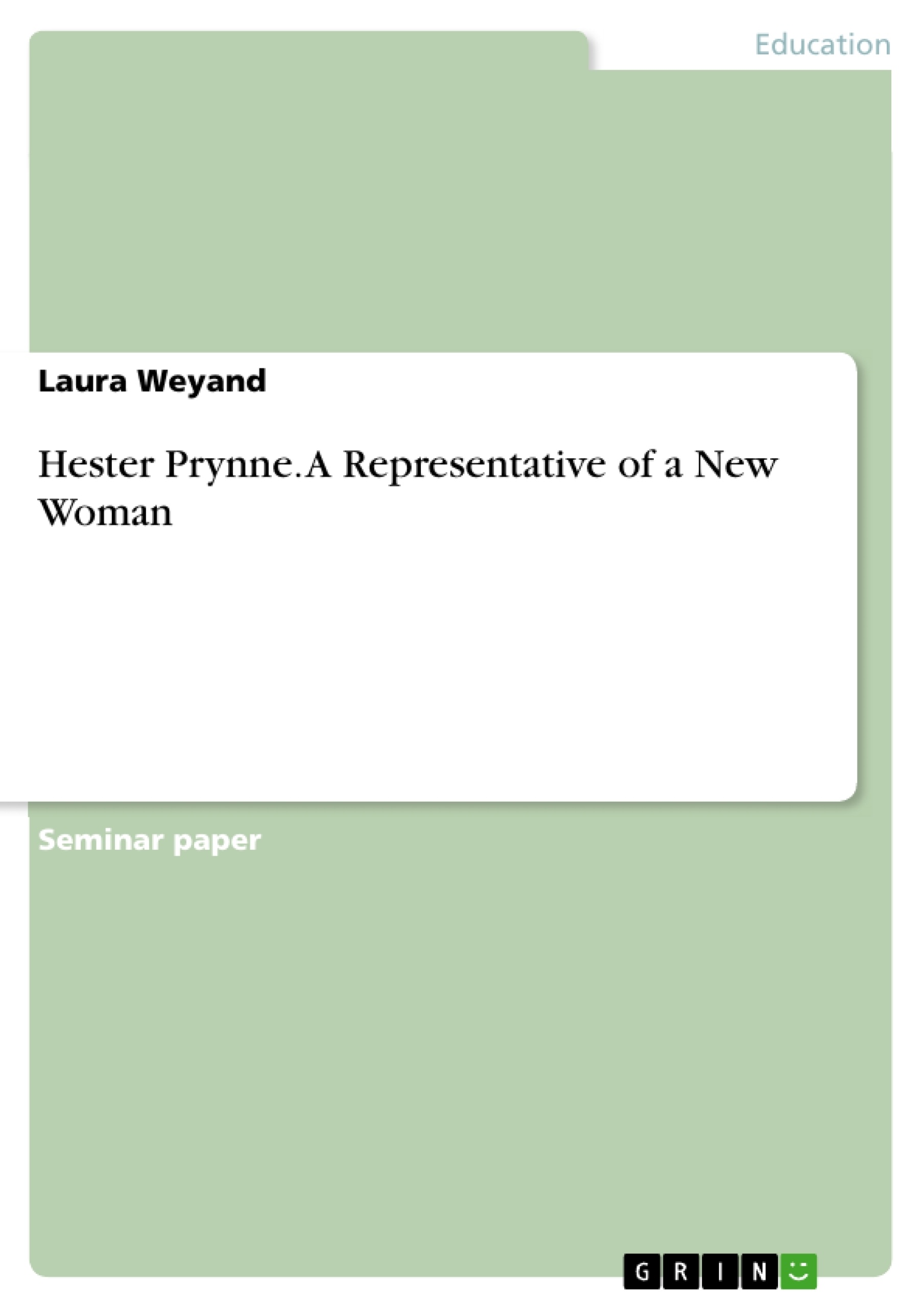In the first part of this term paper a short overview of the situation of
women from the seventeenth century until the middle of the nineteenth century
will be given. Further on, it will then be demonstrated how women challenged
the existing female images and how they fought for equal rights. The main part
discusses if the heroine of the romance, Hester Prynne, can be considered as a
representative of a new female image or if she fits into the image of a
traditional woman of the seventeenth century.
Inhaltsverzeichnis (Table of Contents)
- 1. Introduction
- 2. Development of Female Images
- 2.1. Traditional Female Images
- 2.2. New Female Images
- 3. Hester – An Emancipated Woman
- 4. Conclusion
Zielsetzung und Themenschwerpunkte (Objectives and Key Themes)
This term paper explores the extent to which Hester Prynne, the protagonist of Nathaniel Hawthorne's The Scarlet Letter, transcends the typical portrayal of Puritan women and can be considered a representative of a new type of woman. It investigates the evolution of female images from the 17th to the mid-19th centuries, examining both traditional and emerging representations of women. The paper analyzes Hester's character within this historical context, assessing her actions and motivations to determine her place within the changing social landscape of women's roles and rights.
- The portrayal of women in 17th-century Puritan society
- The development of the "New Woman" ideal in the 19th century
- Hester Prynne's character as a deviation from traditional female roles
- Hester's struggle for independence and self-reliance
- The socio-political context of women's rights in the 19th century
Zusammenfassung der Kapitel (Chapter Summaries)
1. Introduction: This introductory chapter establishes the context for the paper by introducing Nathaniel Hawthorne's The Scarlet Letter and its heroine, Hester Prynne. It highlights Hester's adultery, subsequent punishment, and isolation within the Puritan community. The chapter positions Hester as a strong-minded woman who challenges the traditional female roles of her time, setting the stage for the exploration of her character as a potential representative of a "new woman." The introduction also outlines the paper's structure and objectives: to analyze Hester's character in relation to the evolution of female images and her potential status as a symbol of emerging female independence.
2. Development of Female Images: This chapter provides a historical overview of the changing perceptions of women's roles from the 17th to the mid-19th centuries. It contrasts the traditional image of the Puritan Goodwife—submissive, confined to the domestic sphere, and legally subordinate to her husband—with the emerging ideal of the "New Woman" in the 19th century. The "New Woman" sought greater rights and autonomy, challenging societal norms and engaging in reform movements. The chapter lays the groundwork for understanding the societal constraints and evolving opportunities faced by women during this period, providing a critical context for the analysis of Hester Prynne's character.
3. Hester – An Emancipated Woman: (Note: This section's content would be added based on the original text's chapter 3, following the formatting and instructions provided in the prompt.)
Schlüsselwörter (Keywords)
Hester Prynne, The Scarlet Letter, Puritan society, female images, New Woman, feminism, gender roles, women's rights, adultery, social isolation, independence, self-reliance, 17th-century America, 19th-century America.
Nathaniel Hawthorne's *The Scarlet Letter*: A Term Paper Preview - FAQ
What is the main topic of this term paper?
This term paper analyzes the character of Hester Prynne in Nathaniel Hawthorne's The Scarlet Letter, exploring the extent to which she transcends traditional portrayals of Puritan women and represents a "New Woman" of the 19th century. It examines her actions and motivations within the historical context of evolving female images and rights.
What are the key themes explored in the paper?
The paper explores the portrayal of women in 17th-century Puritan society, the development of the "New Woman" ideal in the 19th century, Hester Prynne's character as a deviation from traditional female roles, her struggle for independence and self-reliance, and the socio-political context of women's rights in the 19th century.
What is included in the Table of Contents?
The table of contents includes an introduction, a chapter on the development of female images (including traditional and new female images), a chapter focusing specifically on Hester Prynne as an emancipated woman, and a conclusion.
What does the chapter on the "Development of Female Images" cover?
This chapter provides a historical overview of changing perceptions of women's roles from the 17th to the mid-19th centuries. It contrasts the traditional image of the submissive Puritan woman with the emerging ideal of the more independent and autonomous "New Woman."
How is Hester Prynne portrayed in the paper?
Hester Prynne is presented as a strong-minded woman who challenges the traditional female roles of her time. The paper analyzes her character to determine her place within the changing social landscape of women's roles and rights, considering whether she represents a new type of woman.
What is the purpose of the chapter summaries?
The chapter summaries provide a brief overview of the content and arguments presented in each chapter of the term paper, giving the reader a clear understanding of the paper's structure and flow of ideas.
What are the keywords associated with this term paper?
Keywords include: Hester Prynne, The Scarlet Letter, Puritan society, female images, New Woman, feminism, gender roles, women's rights, adultery, social isolation, independence, self-reliance, 17th-century America, and 19th-century America.
What is the overall objective of the paper?
The paper aims to analyze Hester Prynne's character in relation to the evolution of female images and to assess her potential status as a symbol of emerging female independence during a period of significant social and political change.
- Quote paper
- Laura Weyand (Author), 2012, Hester Prynne. A Representative of a New Woman, Munich, GRIN Verlag, https://www.grin.com/document/267013




